written and photograpphed by Mary L. Peachin
Sep 1999, Vol. 3 No. 10
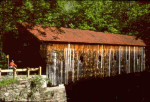 The state of Vermont may draw the majority of its visitors for the colorful foliage of autumn, but the state has year-round appeal. Our travel schedule took us to Vermont in the spring, where we joined a five-day Bike Vermont tour in the Five Rivers area near Proctorsville. Instead of the reds and golds of fall, we enjoyed the new leaves of maple and birch, sparkling in delicate shades of green. Blossoms from scattered apple trees dotted the landscape like snowflakes, while gardens of iris were in the prime of their bloom.
The state of Vermont may draw the majority of its visitors for the colorful foliage of autumn, but the state has year-round appeal. Our travel schedule took us to Vermont in the spring, where we joined a five-day Bike Vermont tour in the Five Rivers area near Proctorsville. Instead of the reds and golds of fall, we enjoyed the new leaves of maple and birch, sparkling in delicate shades of green. Blossoms from scattered apple trees dotted the landscape like snowflakes, while gardens of iris were in the prime of their bloom.
Our group consisted of nine bicyclists, accompanied by two guides plus a support van to move our luggage. Each day we rode over 25 to 35 miles of moderately hilly terrain; each night we stayed in charming Victorian inns, several of which once served as waystations for the area’s nineteenth-century stagecoach line.
 The trip would have been perfect had we not encountered three unseasonably rainy days. While the inclement weather didn’t damp our enthusiasm, it did cause us to make a few detours, avoiding some slippery, muddy country roads. We also spent a bit of time pulling off the road to browse through antique stores, tour cheese factories, and explore a variety of craft boutiques.
The trip would have been perfect had we not encountered three unseasonably rainy days. While the inclement weather didn’t damp our enthusiasm, it did cause us to make a few detours, avoiding some slippery, muddy country roads. We also spent a bit of time pulling off the road to browse through antique stores, tour cheese factories, and explore a variety of craft boutiques.
The tour began on a Sunday night, with dinner at the Okemo Lantern Lodge in Proctorsville. The following morning we rode along a road edged by the Black River. After a few hours, we stopped in the picturesque village of Woodstock for lunch, browsing through the shops before continuing on the 36-mile route to Bridgewater.
We’d been on the road for only a few minutes when David, my husband and riding buddy, yelled, “Moose!” He was so excited to see the animal peering from the edge of the woods that he failed to point out its location. I missed it entirely, as I was busy admiring a white-breasted duck nesting on a rock along the bank of the river.
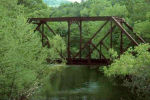 Our ride next took us through Morgan horse country, where green fields surrounded red barns and blue clapboard farmhouses edged by white picket fences.
Our ride next took us through Morgan horse country, where green fields surrounded red barns and blue clapboard farmhouses edged by white picket fences.
The rain began to fall gently at first. Soon the wheels of our bikes splattered a grimy strip of dirt down the middle of each of our backs, but we rode on. As the rain made the road increasingly slippery, the mud attracted small red lizard-like newts and a solitary millipede. The grade of the road steepened as we rode past Jenne Farm, the site location for the movie Forrest Gump.
The rain fell harder as we bicycled along the Ottauquechee River and turned onto another steep portion of the route, “College Hill.” By the time we reached our destination, the Long Trail microbrewery near Bridgewater Corners, water sloshed from our bicycle shoes and ran in rivulets dripping from our helmets. We sampled the fare, but regretted not being able to sample the beer on the brewery’s wooden deck overlooking the river.
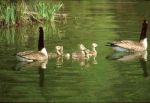 One last push brought us, chilled but happy, to the charming October Country Inn, a renovated nineteenth-century farmhouse. A gourmet dinner of tomato stew, mushroom penne with chicken, grilled asparagus, and a flourless chocolate cake completed the day. Sated, we ambled up a sloping hill, passing the inn’s herb garden on our way to the swimming pool. A whitetail doe and her fawn gazed at us from the edge of the woods.
One last push brought us, chilled but happy, to the charming October Country Inn, a renovated nineteenth-century farmhouse. A gourmet dinner of tomato stew, mushroom penne with chicken, grilled asparagus, and a flourless chocolate cake completed the day. Sated, we ambled up a sloping hill, passing the inn’s herb garden on our way to the swimming pool. A whitetail doe and her fawn gazed at us from the edge of the woods.
The skies threatened again Saturday as we headed toward the village of Plymouth, the birthplace of Calvin Coolidge. Along the route, which would pass three lakes—Rescue, Amherst and Echo—we stopped at a general store to buy lunch. Just as we neared Echo Lake, another downpour began. We huddled under the eve of a deserted summer home, shivering as we ate our sandwiches.
By the end of the day, we’d completed the 23-mile loop from Bridgewater Corners back to Proctorsville. This time we stayed at the to the Golden Stage Inn, a stagecoach stop built in 1791. “You look like a skunk, with that muddy stripe of dirt running down your back. Can I throw your clothes in the washing machine?” offered innkeeper Paul Darnauer. This kind of personal, friendly concern was typical of the hospitality provided by Vermont innkeepers.
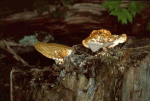 That night our trip leader, Claudette Bourgue, piled us into the support van and drove to Peplau’s Happy Acres Farm. She didn’t want us to miss an opportunity to taste the many varieties of Vermont maple syrup.
That night our trip leader, Claudette Bourgue, piled us into the support van and drove to Peplau’s Happy Acres Farm. She didn’t want us to miss an opportunity to taste the many varieties of Vermont maple syrup.
We did more than taste; we learned all about maple syrup. When spring temperatures rise above freezing, the sap from the maple tree thaws. The sugar makers snowshoe from tree to tree, drilling small holes into thousands of maple trees. The trees start producing at the age of 40; some can be tapped for more than a hundred years. While some sugar makers still use the old-fashioned metal buckets, others prefer new technology using plastic tubing systems to link the trees: gravity feeds the sap down a chute to the farmhouse.
The sap, which is perishable, is boiled immediately; it might take 20-60 gallons of sap to make one gallon of maple syrup. Generations of farmers pass the tradition of making pure maple syrup, but the state gets into the act too, mandating specifications for density, color, flavor, and clarity. The syrup must also be free of additives.
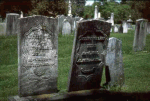 The third day we again woke to the patter of raindrops on the shingles. As we were not looking forward to another day of riding in the rain, Bourque offered us some local non-riding options, including trips to the Manchester, Vermont outlet mall and the Ben and Jerry’s ice cream factory. The diehards among us opted for a shorter version of the day’s route, a 22-mile tour that detoured around some of the muddier roads.
The third day we again woke to the patter of raindrops on the shingles. As we were not looking forward to another day of riding in the rain, Bourque offered us some local non-riding options, including trips to the Manchester, Vermont outlet mall and the Ben and Jerry’s ice cream factory. The diehards among us opted for a shorter version of the day’s route, a 22-mile tour that detoured around some of the muddier roads.
After a morning of riding, we ate lunch at the Country Girl diner, a place where regulars (some looking like they grew up on the diner’s cheeseburgers, greasy fries, and malted milks) tottered in on canes. One elderly lady stopped in for a burger on the way to her “perm day” appointment at the beauty parlor she’d been visiting for 25 years.
That evening we stayed at the Madrigal Inn, owned by Ray and Nancy Dressler. Perched on a hill, the modern-style inn features a garden complete with pond, where a blue heron fished for dinner. Barn swallows dived for hatching insects, a phoebe nested in the eaves of the house, and goldfinch fed at bird feeders. The Madrigal Inn would be a great destination for bird watchers.
 The inn is located on 60 acres, with views of a rusty railroad trestle crossing the scenic Williams River, which is stocked with trout and Atlantic salmon. After we’d explored the grounds, Dressler directed us “exactly .7 miles” down the road to view Worrall’s covered bridge, built in 1868. Woods and a moss-covered three-foot stone wall lined the road. Dressler explained that the region was rocky and early farmers, as they cleared their land, used these slate and mica rocks to build irregular fences to protect their land: “If you see a symmetrical wall, like mine, it’s a new one.”
The inn is located on 60 acres, with views of a rusty railroad trestle crossing the scenic Williams River, which is stocked with trout and Atlantic salmon. After we’d explored the grounds, Dressler directed us “exactly .7 miles” down the road to view Worrall’s covered bridge, built in 1868. Woods and a moss-covered three-foot stone wall lined the road. Dressler explained that the region was rocky and early farmers, as they cleared their land, used these slate and mica rocks to build irregular fences to protect their land: “If you see a symmetrical wall, like mine, it’s a new one.”
Our next ride was a good one; in spite of scattered clouds filling the sky, the day was blessed with sunshine. As we rode along narrow roads shadowed by brilliant russet and green maple trees, a red fox darted across our path. Peddling through the village of Grafton, a town dating back to the American Revolution, we stopped at Chester, this time picnicking next to an historic cemetery, a resting place for those who fought in the Revolution. Antique headstones, some without names, mark graves; the cemetary’s public burying room was dated 1850.
The day’s 36-mile route ended on a maple-lined country road leading to the 204-year-old Inn at Weatherfield, whose candlelit foyer has never been electrified. We had another surprise at Weatherfield—at three in the morning, innkeeper Mary Carter’s mare gave birth to a foal.Although Mary had been up most of the night, she took the time to arrange a departure surprise for us. She introduced us to a fifth-generation Vermonter, a slight, wizened 88-year-old man, who had memorized all of the poetry of Robert Frost. Over breakfast, he recited several Frost poems.
We said goodbye to Mary and her guests, then set off on the final leg of our trip. Riding across the west fork of the Black River through the Downer’s covered bridge (built in 1840), we passed wading anglers throwing fly lines in the Black River. Around noon, we reached the Okemo Lantern Lodge, our starting point in Proctorsville. Tired but happy, we were pleased to find that civilization was near at hand—innkeeper Dody Button had left fresh towels for our showers, along with a plate of cookies and a pitcher of homemade lemonade.
